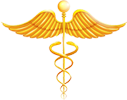


1 Introduction
I. Objective and requirements
1. Tomasterthe classification of genetic disorders;
2. Tounderstand the Human genome project.
II. Key points
Definition of genetic disorder; gene disorders; chromosome disorders; the classification of genetic disorders
III. Lecturing contents and important points
1. The history of development in medical genetics;
2. The Human genome project;
3. The classification of genetic disorders.
IV. Definitions
Genetics; human genetics; medical genetics; genetic disorder; gene disorders; chromosome disorders
V. Study questions
1. What is the genetic disorder? What is the gene disorder? What is the chromosome disorder?
2. The classification of genetic disorders
2 principles of cytogenetics
Ⅰ.Objective and requirements
To master several common kinds of chromosomal abnormalities. To know several techniques of chromosomal analysis
II. Key points
The definitions and consequences of numerical and structural chromosomalabnormalities.
III. Lecturing contents and important points
1. The methods for chromosomal analysis;
2. The types of the numerical chromosomal abnormalities;
3. The types of the structural chromosomal abnormalities.
4. Definition, formation and consequence of mosaicism
IV. Definitions
Cytogenetics, metacentric, submetacentric,acrocentric, karyotype, high-resolution banding, FISH, Euploid, Aneuploid, banlanced structural abnormality, unbalanced structural abnormality, trioploid, tetraploid, endoreduplication, endomitiosis, monosomy, trisomy, nondisjunction, ring chromosomes, isochromosomes, dicentric chromosomes, inversions, translocation, insertions, reciprocal translocation, robertsonian translocation, mosaicism, genomic imprinting
V. Study questions
1. What are the types of numerical abnormality?
2. What are the types of structural abnormality?
3. karyotypes of offspring of balanced carrier of reciprocal translocation.
3 clinical genetics
Ⅰ. Objective and requirements
To master the clinical traits and karyotypes of several most common kinds of autosomal and sex chromosomal disorders.
To master the genentic principal and mechanism of several most common kinds of autosomal and sex chromosomal disorders;
To know the recurrence risk of several most common kinds of autosomal and sex chromosomal disorders;
II. Key points
The characteristics of several most common kinds of autosomal and sex chromosomal disorders.
III. Lecturing contents and important points
1.Phenotypes and karyotypes of trisomes 21 and trisomy 18 as well as trisomy 13
2. Phenotypes and karyotypes of sex chromsomal disorders.
3. Risk and recurrence risk of trisomy 21.
IV. Definitions
Trisomy 21, cri du chat syndrome, Klinefelter syndrome, Turner syndrome
V. Study questions
1. What are the common traits of autosomal disorders?
2. What is the major phenotype of Down syndrome? How many karyotypes of all Down syndrome patients?
3. How about the recurrence risk of Down syndrome
4 patterns Single gene inheritance
I. Objective and requirements
To master the principles of single gene transmitted patterns in the family. To know the AD, AR, XD, XR analysis
II. Key points
The characteristics of the single gene inheritance.
III. Lecturing contents and important points
1. The characteristics of the single gene inheritance;
2. The types of the single gene transmitted patterns;
3. Symbols of the pedigree.
IV. Definitions
Locus, Allele, Genotype,Phenotype, polymorphism, homozygote, Heterozygote, Proband, Consanguineous, penetrance, expressivity, pleiotropy
V. Study questions
1. What are the types of single gene inheritance?
2. Case analysis.
5 polygenic disorders
I. Objective and requirements
To master the characteristics of polygenic disorders transmitted. To know the recurrence risk of the polygenic disorders;
II. Key points
The characteristics of polygenic disorders.
III. Lecturing contents and important points
1. quantitative traits and qualitative traits; 2.The characteristics of polygenic disorders.
IV. Definitions
quantitative traits, qualitative trait, heritability, threshold, liability, susceptibility,
V. Study questions
1. What are the characteristicsofpolygenic disorders?
2. What is the threshold model of polygenic disorders’ transmitted pattern?
6 Mutation and polymorphism
I. Objective and requirements
To master the types of gene mutation;
To know the polymorphism and their application.
II. Key points
the types of gene mutation ,analysis the mutation types.
III. Lecturing contents and important points
1. The types of gene mutation;
2. Examples of gene mutation ;
3. The types of DNA polymorphism and their apllication;
IV. Definitions
nucleotide substitution, Transition, Transversion, missense mutation, nonsense mutation, Frameshift Mutation, RFLP,
V. Study questions
1. What are the types of gene mutation?
2. DNA polymorphism and their application.
7 The molecular and biochemical basis of genetic disease
Ⅰ.Objective and requirements
To master the characteristics, and treatments of PKU; To master the definition of Triplet repeat disorders;
To understand why need to carry out newborn screening and to prevention PKU.
II. Key points
The characteristics, types and treatments of PKU .
III. Lecturing contents and important points
1. The phenotypes of PKU;
2. The principal and types of PKU;
3. The diagnosis and treatments of PKU;
4. The definition and traits of Triplet repeat disorders;
5. The traits of Huntington disease
IV. Definitions
Enzyme defects, phenylketonuria, allelic heterogeneity, locus heterogeneity, clinical heterogeneity, Triplet repeat disorders, anticicpation, dynamic mutation,
V. Study questions
1. What are the types of PKU?
2. What are the Triplet repeat disorders?
8 Gene Mapping
I. Objective and requirements
To know the method of gene mapping.;
II. Key points
The methods of gene mapping and their application
III. Lecturing contents and important points
1. Genetic map and physical map;
2. linkage analysis
3. Association analysis
4. Linkage Equilibrium and disequilibrium
5. The methods of gene mapping.
IV. Definitions
Genome, Genetic map, physical map, FISH, haplotype, Linkage disequilibrium
V. Study questions
1. Case analysis for gene mapping,
9 Principles of Molecular Disease: Hemoglobinopathies
I. Objective and requirements
1. To master thegenetic mechanism of Hemoglobin S and Thalassemias ;
2. The genotype, phenotype and clinical feature of the disease’s Hemoglobin S and Thalassemias.
II. Key points
The genetic mechanism ofHemoglobinopathy
III. Lecturing contents and important points
1. Structure and function of human Hb;
2. Hb in each stageofhuman development;
3. Genetic disorders of Hb;
4. The Hemoglobin S and Thalassemias genetic mechanism;
5. The molecular basis of Hemoglobin S and thalassemia
IV. Definitions
Hemoglobin; Hemoglobinopathy; Hemoglobin S; α -Thalassemias;β
–thalassemia
V. Study questions
1. What are the characteristicsofHemoglobinopathy?
2. What is the different ofα-Thalassemias andβ–thalassemia?
10 Genetics and Cancer
I.Objective and requirements
1. To master the oncogene activation;
2. To master the antioncogene loss the function.
3. To understand the relation of the genetics and cancer.
II. Key points
1. the oncogene activation with cancer;
2. the antioncogene loss the function with cancer.
III. Lecturing contents and important points
1. cancer biology;
2. oncogene activation ;
3. the antioncogene loss the function.
IV. Definitions
benign tumor; cancer; oncogene; Chronic Myelogenous Leukemia –CML; Homogenously staining region, HSR; Double minute, DM; tumor-suppressor genes; Retinoblastoma; loss of heterozygosity (LOH)
V. Study questions
1. How to activate about the oncogene?
2.How to from a cancer?
11 Prenatal Diagnosis
I. Objective and requirements
1. To master the method of prenatal diagnosis;
2. To understand the purpose of prenatal diagnosis.
II. Key points
The method of prenatal diagnosis
III. Lecturing contents and important points
1. Invasive testing; 2.Noninvasive testing;
IV. Definitions
Amniocentesis; Chorionic Villus Sampling; Cordocentesis; Invasive testing; Invasive testing; Maternal serum screening (MSS); neural tube defects (NTDs)
V. Study questions
1. what situation need to carry out a prenatal diagnosis?